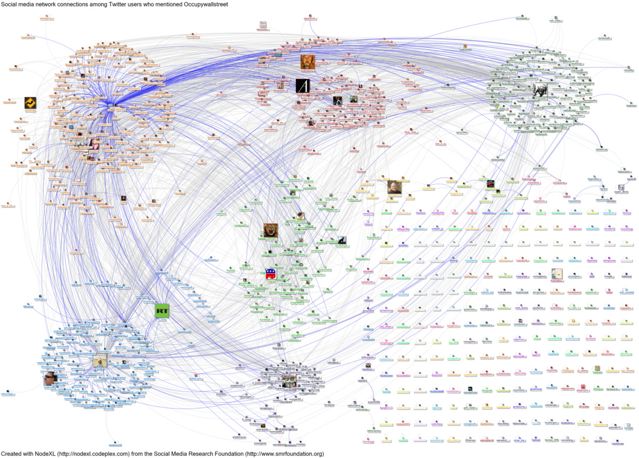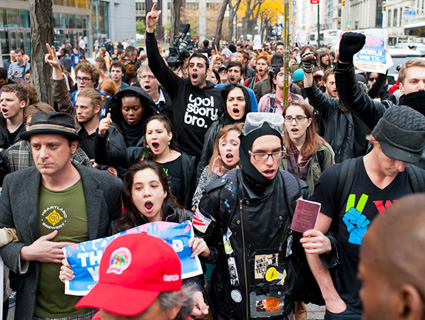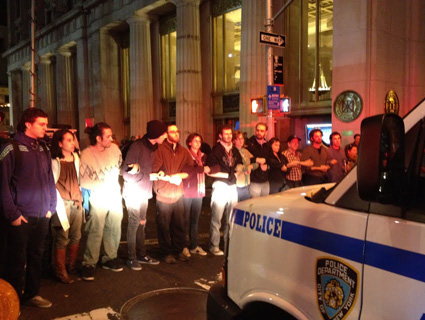 Occupy Wall Street Twitter network as of November 15 2011. [Click the image for a larger version] Credit: Marc Smith/Social Media Research FoundationHere’s an interesting analysis by Marc Smith at the Social Media Research Foundation in Belmont, California, of the difference between Occupy Wall Street and Tea Party tweeters. The above image shows the OWS network. Here’s how it’s described on Marc Smith’s Flickr page:
Occupy Wall Street Twitter network as of November 15 2011. [Click the image for a larger version] Credit: Marc Smith/Social Media Research FoundationHere’s an interesting analysis by Marc Smith at the Social Media Research Foundation in Belmont, California, of the difference between Occupy Wall Street and Tea Party tweeters. The above image shows the OWS network. Here’s how it’s described on Marc Smith’s Flickr page:
These are the connections among the Twitter users who recently tweeted the word occupywallstreet when queried on November 15, 2011, scaled by numbers of followers (with outliers thresholded). Connections created when users reply, mention or follow one another. Relies and mentions edges are highlighted in blue, follows connections are grey. The data set starts on 11/15/2011 23:08 and ends on 11/15/2011 23:34 UTC, a total of 26 minutes of traffic.
 Tea Party Twitter network as of November 15th 2011. [Click on the image for a larger version] Credit: Marc Smith/Social Media Research Foundation.And here’s the Twitter network formed by Tea Party users. From Marc Smith’s Flickr page:
Tea Party Twitter network as of November 15th 2011. [Click on the image for a larger version] Credit: Marc Smith/Social Media Research Foundation.And here’s the Twitter network formed by Tea Party users. From Marc Smith’s Flickr page:
These are the connections among the Twitter users who recently tweeted the word teaparty when queried on November 15, 2011, scaled by numbers of followers (with outliers thresholded). Connections created when users reply, mention or follow one another. Relies and mentions edges are highlighted in blue, follows connections are grey. The data set starts on 11/15/2011 14:22 UTC and ends on 11/15/2011 17:23, a total of 3 hours and 1 minute of traffic.
As you can see, the OWS network is bigger, more diffuse, more active, and less centered on already established Twitter relationships. Basically, it’s more viral. The Tea Party network is more contained, less contagious. Peter Aldhous at New Scientist writes:
Compared to Occupy, the Tea Party supporters have a much denser network of following relationships. “The Tea Party is an ‘in group’ thing,” Smith argues. But for now, at least, the conversation within this group is muted compared to that surrounding Occupy—not only is the rate of tweets much slower, but fewer of the relationships show up in blue, indicating an active response to a post.















